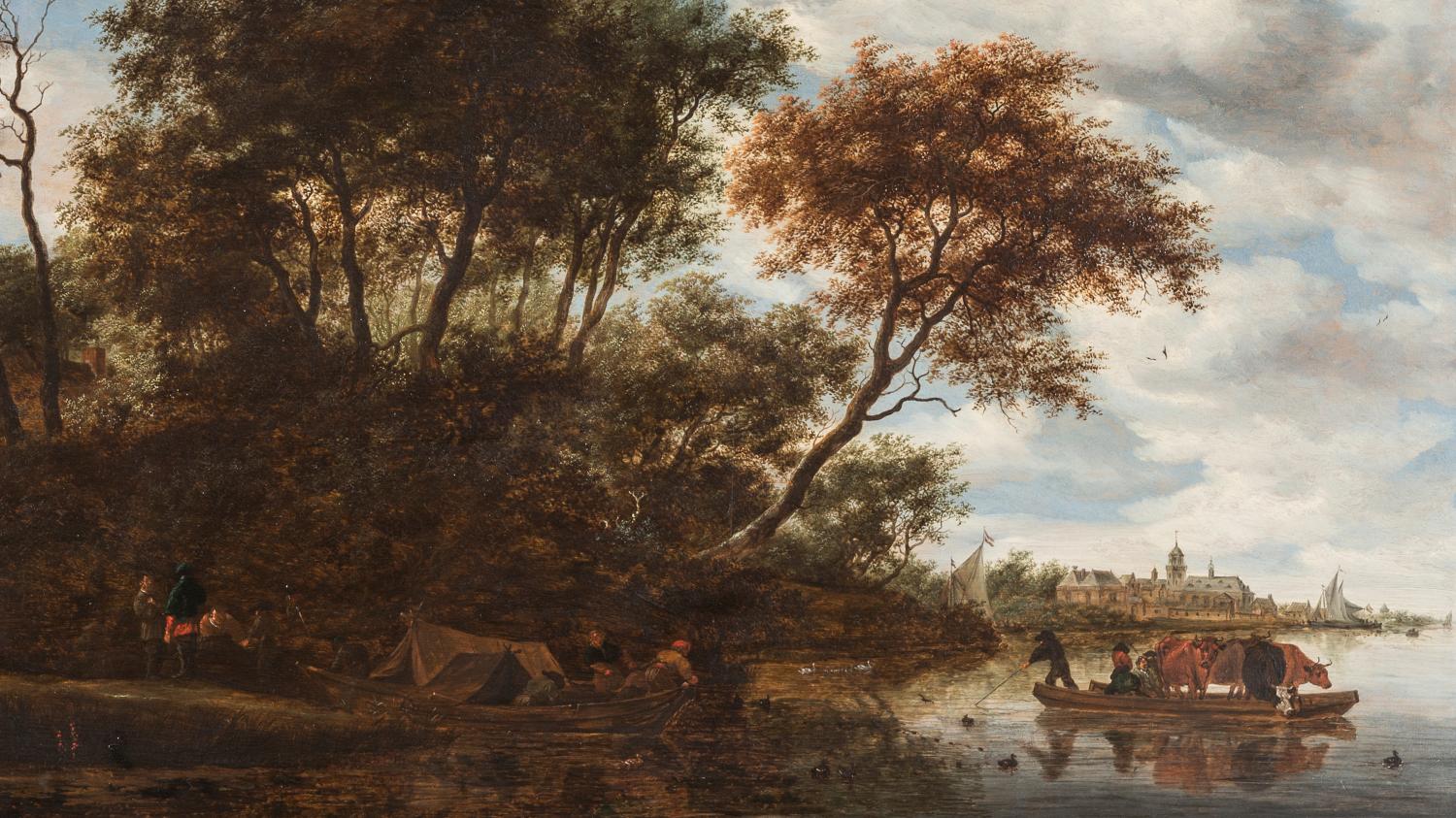News:
Artwork looted by Luftwaffe chief Hermann Goering is returned
By Jack Blackburn

The painting by the 17th-century Dutch artist Salomon van Ruysdael is worth an estimated £300,000
In lists of prolific art thieves, the name Hermann Goering is often absent.
The Luftwaffe chief catalogued some 1,400 artworks he stole from Jewish owners, an act of grand larceny which is still being undone.
Next week, Sotheby’s will unpick the theft a little further, thanks to a discovery by one of the auction house’s experts.
A deal has been reached between the owner of a painting by 17th-century Dutch artist Salomon van Ruysdael and the heirs of Jacques Goudstikker, an art dealer who owned the piece — valued at up to £300,000 — before the Nazi invasion of the Netherlands. He died at sea while fleeing for Britain.
The history of the painting, A View on the River Vecht with Kasteel Nijenrode Beyond, emerged when an expert reviewing the piece saw Goudstikker’s labels on the back. George Gordon, co-chairman of old masters paintings at Sotheby’s, said: “It seemed quite likely that it would actually be a painting which would at the very least need to be checked out.”
One label featured a number, 2772, found in the dealer’s black book, an inventory he took with him as he fled the Nazis. It was easy to confirm this as one of the 800 pieces of Goudstikker’s looted by Goering.
Before the war, Goudstikker was an ambitious and successful art dealer who also helped fellow Jews who were fleeing Nazi oppression. “He had a very high profile in prewar Europe, notably producing incredibly glamorous catalogues. He was a marketing genius,” Lucian Simmons, head of restitution at Sotheby’s, said. “He helped people who had blocked accounts to get money out of Germany.”
Goudstikker boarded a boat for Britain intending to move to the United States but died on the journey. He is buried in Falmouth.
Aside from the labels, the back of the painting also bears a number pencilled on by the “monuments officers”, the Allied contingent tasked with recovering and returning as much stolen Nazi art as possible.
The Ruysdael was found in the hills near Berchtesgaden, where Goering had transferred it in the face of the Red Army’s advance at the end of the war. The monuments officers returned it to the Dutch government which, for reasons unknown, did not return it to the Goudstikkers. “Goudstikker’s widow was in negotiations with the Dutch government after the Second World War to recover some of her late husband’s property,” Simmons said. “I think today the agreement she signed is regarded as less than fair, to put it neutrally.” The painting went on the market and has been sold many times over the past 70 years. Its present owner inherited from it his parents and was highly co-operative once alerted to the issue.


